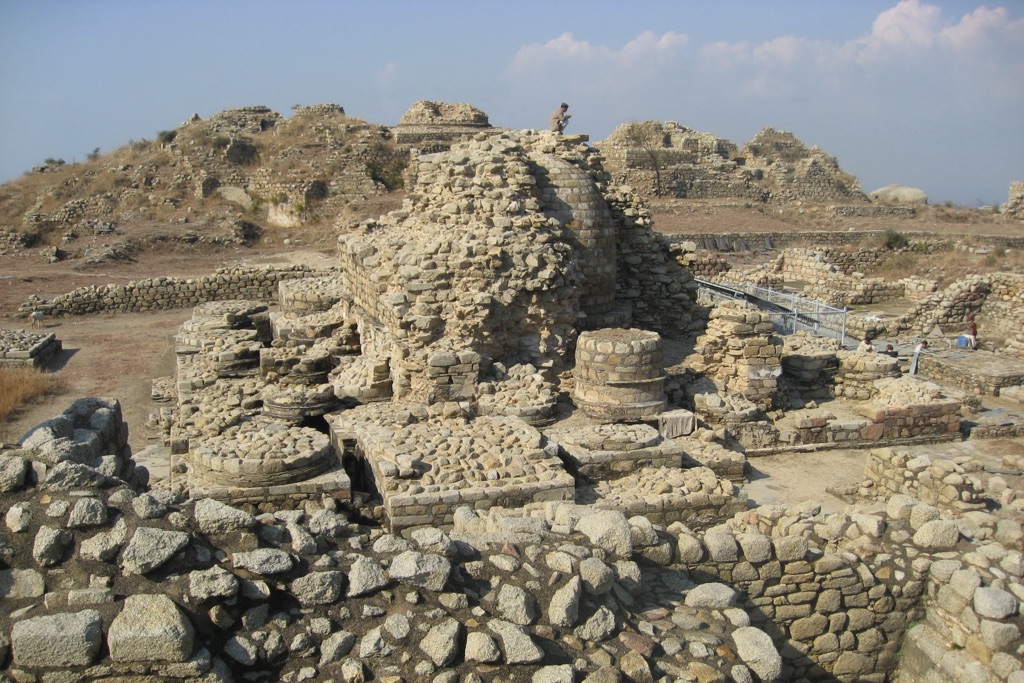Ranigat is a historical site located in the Buner Valley of Khyber Pakhtunkhwa, Pakistan. It’s a treasure trove of ancient Buddhist monastic structures. The site dates back to the 1st century AD and showcases the Gandhara civilization’s architectural prowess. Ranigat was part of the ancient trade route connecting India with Central Asia. The ruins include stupas, monasteries, and a fortified citadel, reflecting a blend of Buddhist religious and secular life. The site provides valuable insights into the region’s history and the spread of Buddhism along the Silk Road.
Get your dose of History via Email
Historical Background of Ranigat
Ranigat’s discovery dates back to the 19th century. Archaeologists stumbled upon this gem while exploring the Gandhara region. Sir Alexander Cunningham, a British archaeologist, was among the first to document it. The site was built by the Gandhara civilization, known for its unique art and architecture. Over time, Ranigat saw various inhabitants, including Buddhist monks and later, local rulers. It was not just a religious site but also a strategic location for trade and governance.
The construction of Ranigat aligns with the Kushan dynasty’s reign. This period saw a flourishing of Buddhist culture and art. The Kushans patronized Buddhism, leading to the establishment of monasteries and stupas. Ranigat’s strategic position made it a hub for religious and commercial activities. It also witnessed historical events, such as the spread of Buddhism and the region’s changing political landscape.
After the decline of the Kushan Empire, Ranigat continued to be significant. Local dynasties maintained the site, and it remained a center of learning and pilgrimage. However, with the advent of Islam in the region, the site’s religious importance waned. It eventually fell into disuse and was reclaimed by nature until its rediscovery.
Excavations at Ranigat have revealed layers of history. These findings have helped historians piece together the site’s past. The artifacts and structures found here are a testament to the region’s rich cultural heritage. They also provide evidence of the interactions between different civilizations that passed through the Silk Road.
Ranigat’s historical importance is immense. It was not just a monastic complex but also a fortified city. This dual nature highlights the interconnection between the religious and secular worlds in ancient times. The site’s history is a narrative of cultural exchange, religious devotion, and the ebb and flow of empires.
About Ranigat
Ranigat is a sprawling complex spread over an area of around 10 hectares. The site is a marvel of ancient engineering and religious devotion. It consists of a main stupa surrounded by smaller votive stupas, monastic cells, a monastery, and a fortified area. The main stupa once housed sacred relics and served as a focal point for worship.
The construction techniques of Ranigat reflect the ingenuity of the Gandhara civilization. Builders used local stone and stucco to create the structures. The architectural style is indicative of Greco-Buddhist influences, with Corinthian columns and intricate friezes. These elements showcase a fusion of Greek, Persian, and Indian artistic traditions.
One of the highlights of Ranigat is its monastery. The monastery’s layout includes a courtyard, meditation cells, and a dining area. The monastic cells provided living quarters for the monks. The dining area suggests a communal lifestyle among the inhabitants. The entire complex was enclosed by walls, indicating the need for protection and seclusion.
The fortified area of Ranigat is another significant aspect. It includes defensive walls, watchtowers, and gateways. This fortification points to the site’s strategic importance. It not only served religious purposes but also acted as a stronghold in the region. The fortifications would have been essential for safeguarding the monastic community and traders.
Ranigat’s architectural features are a testament to the site’s grandeur. The intricate carvings and statues found here are prime examples of Gandhara art. They depict various scenes from the life of Buddha and Buddhist lore. These artistic works are invaluable for understanding the religious and cultural milieu of the time.
Theories and Interpretations
Several theories surround Ranigat’s purpose and significance. Most scholars agree that it was a major Buddhist monastic and educational center. The presence of numerous stupas and monastic cells supports this view. Ranigat likely played a role in the dissemination of Buddhist teachings along the Silk Road.
There are mysteries about Ranigat, particularly regarding its decline. Some suggest that the arrival of Islam led to its abandonment. Others point to economic shifts or natural disasters. The exact reasons remain a subject of research and debate among historians and archaeologists.
Interpretations of Ranigat’s structures often rely on historical texts and comparisons with other sites. The art and architecture are matched to descriptions found in ancient records. This helps to understand the religious and cultural practices of the time. However, some aspects of the site are unique, leaving room for interpretation.
Dating of Ranigat has been carried out using various methods. These include stratigraphy and radiocarbon dating. The results have helped establish a timeline for the site’s construction and use. They also provide a chronological context for the artifacts found at the site.
Theories about Ranigat continue to evolve as new discoveries are made. Each excavation brings to light more information, enriching our understanding of the site. Ranigat remains a subject of fascination for those interested in the ancient world and the spread of Buddhism.
At a glance
Country: Pakistan
Civilization: Gandhara Civilization
Age: 1st century AD

